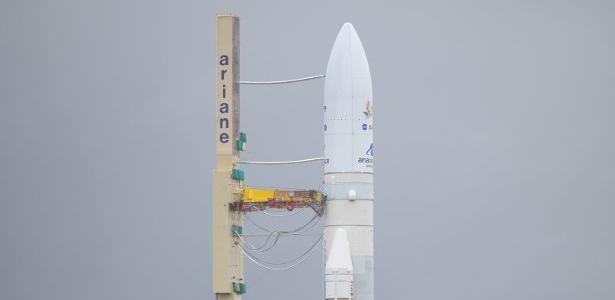With a promise to revolutionize space science, James Webb releases today – 12/25/2021
2 min read
Finally, the James Webb Space Telescope will be launched on Saturday (25th) after a series of delays. with approx 30 years of development at a cost of about 10 billion USDIt will be loaded onto a European Ariane 5 rocket and scheduled for launch at approximately 9:20 am (GMT) from Kourou base in French Guiana.
The JWST (James Webb Space Telescope), as it is also known, is Revolutionizing space science. This is because it will allow observation in infrared light, which the human eye cannot perceive.
In practice, this means that it will be used to research the formation of the first stars and galaxies, as well as analyze the birth of planetary systems and even the origin of life.
According to NASA, by displaying the universe in infrared wavelengths, JWST will show us things never before seen by any other telescope. Only at this wavelength can we see ancient structures from the era of the Big Bang.
James Webb will be the successor to the Hubble Telescope, which was launched in 1990. Although it is active today, its observing power is unparalleled.
Hubble is designed to be sensitive to light at visible or optical wavelengths (the kind of light we see with our eyes), while James Webb picks up infrared waves. Another difference is the size of the mirror. While James Webb is 6.5 meters in diameter, Hubble is 2.4 meters in diameter.
What’s curious is that NASA tells us that both will be able to work together.
Despite the release this Saturday (25), it should take some time for James Webb to start sending photos back to Terra. This is because it must first “unfold” after an Ariane 5 rocket drops it into space, and then it must travel to the L2 Lagrange point, which is 1.5 million km from Earth.
The trend is that it takes a few weeks to get there. Once the mirrors snap into place, James Webb can get to work. This is expected to take place at the end of the first half of 2022.
Delay
The fruit of a partnership between the US Space Agency (NASA), the European Space Agency (ESA) and CSA (CSA), James Webb is too late.
The project became a snow globe for financiers. Initially, it would be launched between 2007 and 2011 and had a budget of $3.5 billion. As the project became more complex, more funds were needed and its launch was delayed. In all, $10 billion was spent.
It was still expected to release in 2018, but agencies started delaying it again. In October of this year, the telescope arrived at the Kourou launch base in French Guiana. James Webb’s first time out of space was November 18, but technicians discovered an error. There will be an attempt on December 24, but the weather forecast was not enough.

“Musicaholic. Thinker. Extreme travel trailblazer. Communicator. Total creator. Twitter enthusiast.”







